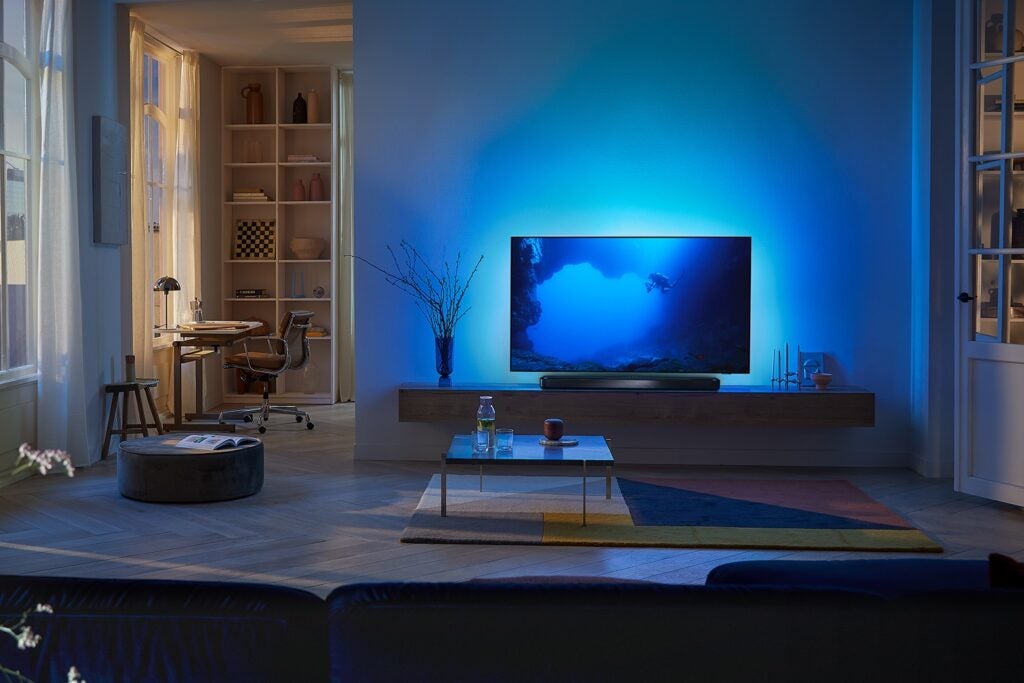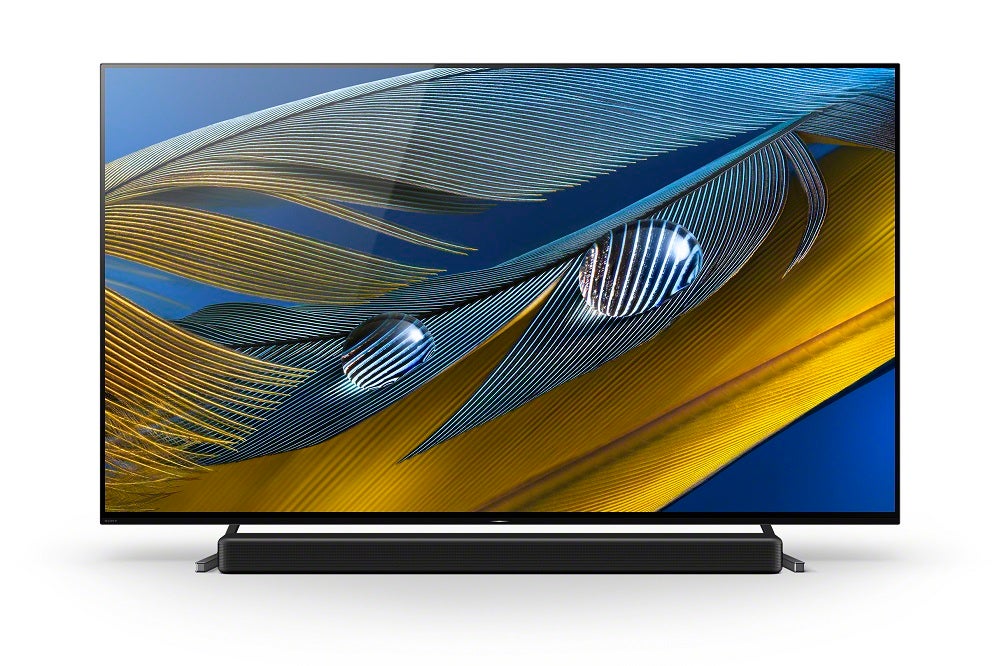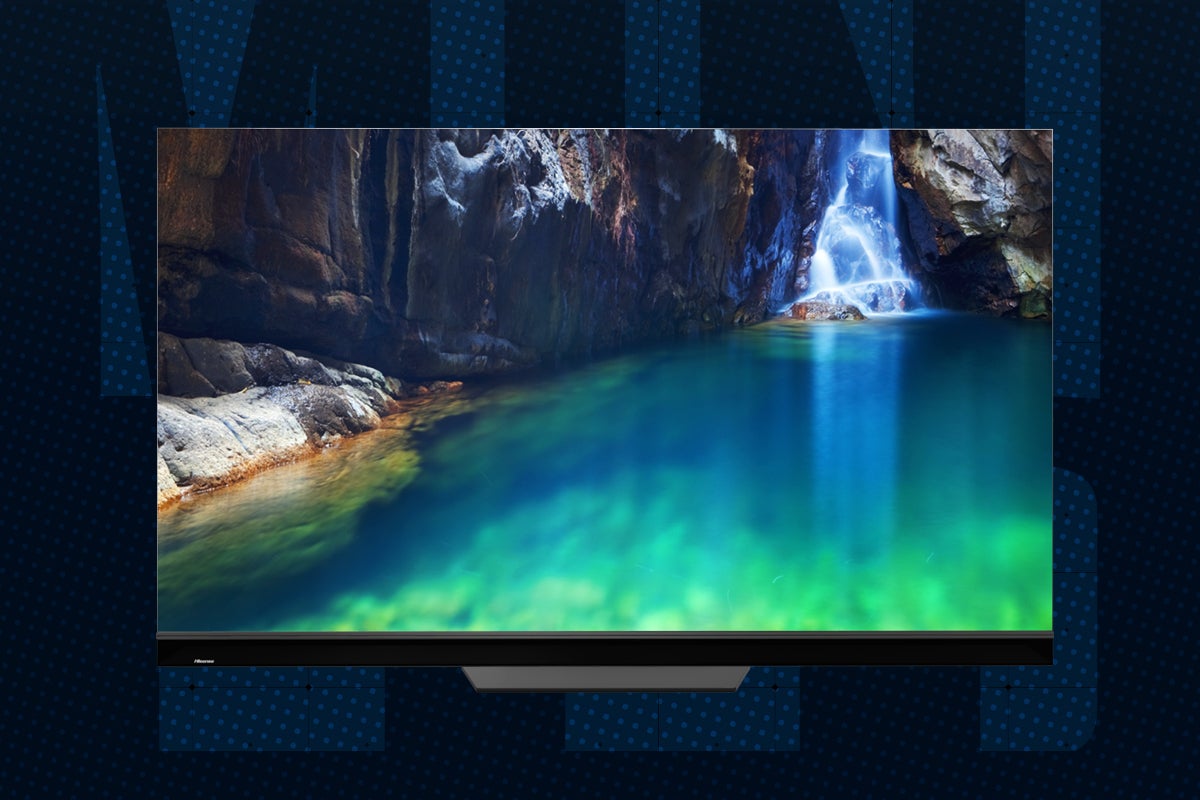What is IMAX Enhanced? What you need to know about the home cinema format

Every year there’s a new home cinema technology looking to gain your attention. While IMAX Enhanced isn’t new, it’s been gaining traction among manufacturers and customers looking for a premium home cinema experience.
IMAX Enhanced launched in 2018 as a partnership between cinema giant IMAX and audio specialist DTS. The goal was to deliver IMAX’s signature picture, scale and sound to the home in 4K HDR.
We’ll explain what it is, what devices you need and where you can get IMAX Enhanced content.
What is IMAX Enhanced?
In a nutshell, IMAX Enhanced is a certification programme to ensure the highest quality playback in the home with regards to resolution, colour, brightness, contrast and sound.
The standard can be broken down into its three components: picture, sound and scale.
The first relates to IMAX’s Digital Media Remastering technology or DMR. According to IMAX, this can accurately reduce noise and grain under the filmmaker’s guidance to optimise content for “higher-quality, higher-brightness” 4K HDR displays. Without this treatment, IMAX believes that HDR content could look worse than intended. IMAX Enhanced also supports HDR10+ with some titles.
The sound portion is delivered through IMAX’s partnership with DTS. It uses a variant of the immersive DTS:X audio format to recreate the IMAX experience with deeper bass and wider dynamic range than is typical for a living room environment.
Scale refers to IMAX Enhanced titles that were shot with IMAX-certified cameras or specially formatted for its 1.44:1 or 1.9:1 aspect ratio. This enables viewers to see the full size of the image, with IMAX content filling out all four frames of the display.
Who supports IMAX Enhanced?
Several content providers, TV manufacturers and AV brands have signed up to IMAX Enhanced. It’s not as many as other formats, but IMAX Enhanced is positioned towards the premium side of the AV market.
With compatible devices, you shouldn’t need to press a button or select a mode either. IMAX Enhanced content will automatically play when it detects a supported device/mode.
In terms of IMAX Enhanced displays, there are premium TVs from Sony, Hisense, TCL and upcoming 2022 Philips TVs. For speakers and subwoofers there’s JBL, Definitive Technology and Philips, while in terms of projectors and AV receivers there’s the likes of Arcam, Sony, Denon, Marantz, Onkyo, Pioneer, Anthem, Lexicon, McIntosh among others.

Compatible TVs have been promised to be getting an IMAX Mode (Sony’s Bravia Core streaming service supports IMAX, too), while some AV receivers are able to flag IMAX content and display the format.
To get the impact of IMAX Enhanced content, you needn’t buy the full complement of supported products. Devices can be bought individually, so if you’ve got an IMAX Enhanced soundbar but not a TV, it’ll wring a better performance from the audio.
But to quote IMAX, “when playing back IMAX Enhanced streaming content on both certified display and audio devices, the sum of the whole is greater than its parts – creating the most premium in-home entertainment experience anywhere.”
What set-up is recommended for IMAX Enhanced?
The minimum speaker layout for the standard is a 5.1.4 system. That’s five speakers (in the horizontal plane), one subwoofer and four height speakers. DTS recommends a 7.2.4 system – seven speakers, two subwoofers and four heights – as the most optimal set-up.
If you don’t have that set-up or indeed the space for it, DTS:X is very flexible as its decoder can remap the soundstage to match the speakers you have at your disposal. Speakers should have a frequency response of 20Hz to 20kHz, with a sensitivity of 89dB. Subwoofers should be able to go down as far as 20Hz and hit 115dB peaks.

When it comes to TVs there aren’t specific guidelines, but it’s more than hinted you’ll need a high-end TV capable of a good HDR performance. We wouldn’t expect this format to appear on TVs smaller than 55-inches to get that full-screen IMAX effect, so if you are interested in IMAX Enhanced, you’re going to need a bigger TV.
When it comes to 4K Blu-ray players there’s no official certification required. It only needs to pass the 4K HDR picture and DTS:X soundtrack on to a compatible device.
And if you don’t have IMAX Enhanced gear or aren’t interested, content will still play on your devices in its normal form. It’s only when there’s an IMAX Enhanced compatible device in play that the device will deliver the optimised presentation.
Where can I get IMAX Enhanced content?
Compared to Dolby Vision, there’s not as much content available. Big titles so far include Jumanji: The Next Level, Spider-Man: Far From Home, Zombieland: Double Tap and Bad Boys For Life.
Don’t expect IMAX Enhanced content to be the sole preserve of 4K Blu-rays either. If you can’t find the IMAX logo on your physical 4K copy, it’s likely because the digital version is the enhanced version. In fact, streaming is where you’ll start to find the bulk of IMAX Enhanced titles.

Sony and Paramount have put their weight behind the format, the former with its Bravia Core service and the latter offering several titles on streaming sites such as Bumblebee, Crawl and Rocketman.
Rakuten TV’s streaming service supports IMAX Enhanced content in Europe, but for the time being there’s not a huge amount of content available. And there’s also Disney+, which added IMAX Enhanced titles in 2021, although these appear to play with Dolby audio and not DTS sound mixes.
Is IMAX Enhanced worth it?
To be honest, we’re not sure as we’ve not had many opportunities to test it, which speaks to the way the ecosystem has developed. It’s not been too easy to watch content in the format as up until its launch on Disney+, IMAX Enhanced was a community where you had to buy into it or there was a smattering of titles on the less popular streaming services. Its implementation on Disney+ strikes us as a little odd, as it appears to omit DTS sound, which is claimed to be one of the pillars of the IMAX Enhanced.
In our view, IMAX Enhanced needs to make content more accessible, and get more manufacturers onboard before it can be thought of as a true rival in the home cinema space to Dolby Vision + Atmos








